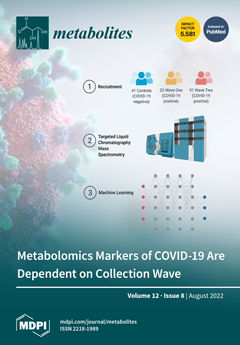PF74 and
11L, as potent modulators of the HIV-1 capsid protein, have been demonstrated to act at both early and late stages in the HIV-1 life cycle. However, their clearance is high in human liver microsomes (HLMs). The main goal of this study was to clarify the metabolism of
PF74 and
11L in HLMs, and provide guidance for future structural optimization. To accomplish this, the phase-I metabolites of
PF74 and
11L, resulting from in vitro incubation with HLMs, were investigated via ultra-performance liquid chromatography–ultraviolet–high-resolution mass spectrometry (UPLC–UV–HRMS). The results show that 17 phase-I metabolites were putatively annotated for
PF74, whereas 16 phase-I metabolites were found for
11L. The main metabolic pathways of
PF74 in HLMs were oxidation and demethylation, and the secondary metabolic pathway was hydrolysis; thus, the di-oxidation and demethylation products (
M7,
M9,
M11, and
M14) were found to be major metabolites of
PF74 in HLMs. In comparison, the main metabolic pathways of
11L in HLMs were oxidation, demethylation, dehydrogenation, and oxidative deamination, with
M6′,
M11′,
M15′, and
M16′ as the main metabolites. We suggest that the indole ring and
N-methyl group of
PF74, and the aniline group, benzene ring R1′,
N-methyl, and methoxy group of
11L, were the main metabolic soft spots. Therefore, our research illuminates structural optimization options in seeking improved HIV-1 CA modulators.
Full article






